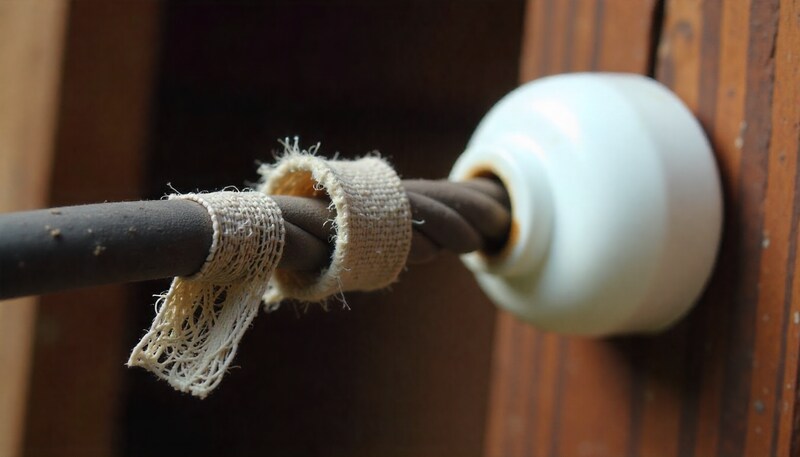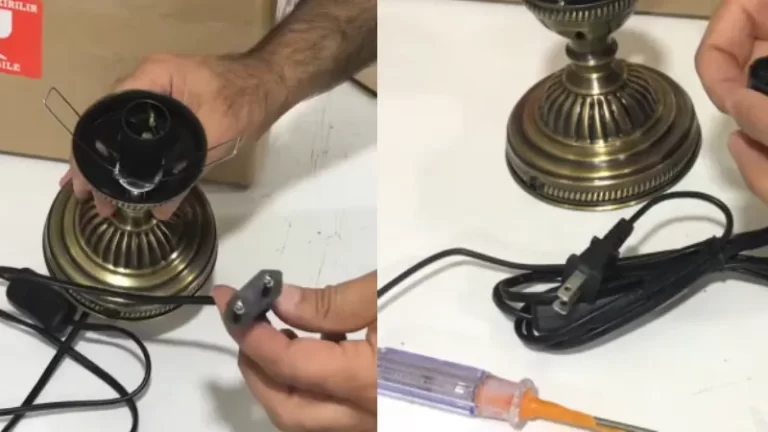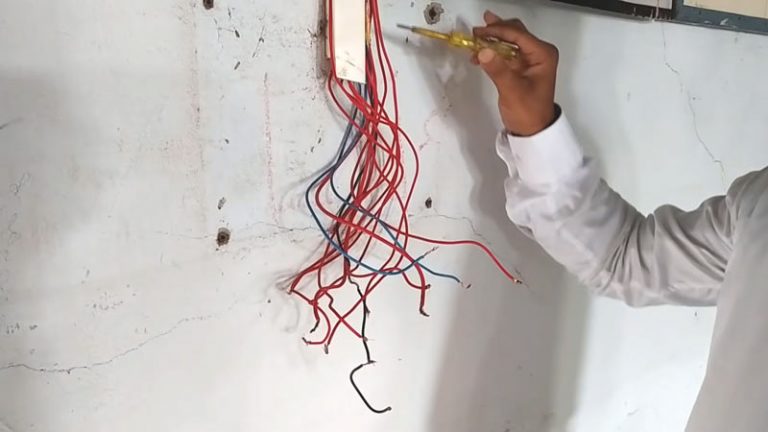Cloth Wiring vs Knob and Tube: Which Hidden Danger Is Lurking in Your Walls?
You bought an older home, charmed by its character and history. But beneath the plaster and behind the baseboards, a silent hazard could be waiting. For homes built before 1960, the electrical system is often a relic from a bygone era, and two terms frequently surface during home inspections: cloth wiring and knob and tube.
Many homeowners find themselves confused, wondering what these terms mean and which poses a greater threat. The core problem is that both systems are dangerously outdated, unable to handle modern electrical loads and prone to failures that can lead to shock or devastating fires. Understanding the difference is the first step toward securing your home.
You'll Learn About
Unraveling the Wires: What Is Knob and Tube?
Knob and tube (K&T) wiring was the standard method for residential electrical systems from the late 1800s through the 1940s. Its design is fundamentally different from any wiring used today. It consists of single copper conductors wrapped in a rubberized cloth insulation.
These individual wires were run separately through the walls and floors. To keep them from touching flammable wood framing, electricians used ceramic knobs to hold the wires taut and ceramic tubes to protect them when passing through joists. This design allowed air to circulate around the wires, dissipating heat effectively.
The Downfall of an Old Standard
While ingenious for its time, K&T wiring is fraught with problems in the modern world. Its primary flaw is the lack of a ground wire, an essential safety feature that protects against electrical shock. The cloth and rubber insulation also becomes extremely brittle with age, cracking and flaking away to expose live conductors.
Furthermore, K&T systems were never designed for the heavy electrical loads of modern households. Over the decades, many K&T systems have been improperly modified or spliced into, creating dangerous connections. When modern insulation is blown into walls, it can smother the wires, preventing heat from dissipating and creating a serious fire hazard.
Decoding Cloth-Covered Cables
As knob and tube was being phased out, its successor arrived: early non-metallic sheathed cable, often generically called “cloth wiring.” Used extensively from the 1940s into the 1960s, this wiring looks more familiar to the modern eye. It bundles hot, neutral, and sometimes (but not always) a ground wire into a single cable.
The entire bundle is protected by an outer sheath made of fabric, often black and treated with tar-like substances to resist moisture. Internally, the individual copper wires were typically insulated with rubber. This system was cheaper and faster to install than knob and tube.

The Hazards of Aging Fabric
Like its predecessor, the main enemy of cloth-covered wiring is time. The rubber insulation inside the sheath becomes brittle and deteriorates, turning to dust at the slightest touch. This often happens inside junction boxes and around light fixtures, where the wires have been bent or moved.
This deterioration exposes live wires, creating a severe risk of arcing—where electricity jumps between conductors—leading to fires. The cloth sheath itself can be flammable, and pests are known to chew through the fabric, further compromising the system. Some older cloth wiring was also insulated with asbestos, which poses a significant health risk when disturbed.
Head-to-Head: The Critical Differences
While both wiring types are hazardous, they fail in different ways. Understanding these distinctions can help you assess the specific risks in your home. The debate isn’t about which is “better,” but rather recognizing the unique dangers each presents.
Construction and Design
The most obvious difference is the construction. Knob and tube is a system of separated, single conductors held in place by ceramic insulators. Cloth wiring is a bundled cable containing multiple conductors within a single fabric sheath, similar in form to modern Romex®.
This design difference impacts how they fail. K&T is vulnerable to being covered by insulation and physical damage to its exposed conductors. Cloth wiring’s main failure point is the internal breakdown of its brittle rubber insulation, often hidden from view within the cable itself.
Presence of a Ground Wire
Knob and tube wiring never includes a ground wire. This is a non-negotiable safety deficiency that makes it incompatible with any three-pronged appliance. Without a ground, excess electrical current has no safe path to the earth, increasing the risk of shock and equipment damage.
Early cloth-covered cables also lacked a ground wire. However, some later versions produced in the 1960s began to include a paper-wrapped ground conductor. The presence of a ground wire in cloth wiring is inconsistent and cannot be assumed without a thorough inspection.
Insurance and Insurability
From an insurance perspective, both systems are a major liability. Many insurance companies will refuse to write a new policy for a home with active knob and tube wiring. Those that do will often charge significantly higher premiums until the system is replaced.
Cloth-covered wiring is also a red flag for insurers, though some may be slightly more lenient if the system is in good condition. However, due to the high risk of insulation failure, most will require a full replacement to offer coverage or renew a policy.
Comparison at a Glance
This table summarizes the key distinctions between these two outdated wiring systems.
| Feature | Knob and Tube Wiring | Cloth-Covered Wiring |
|---|---|---|
| Era of Use | Approx. 1880s – 1940s | Approx. 1940s – 1960s |
| Construction | Separate copper conductors on ceramic insulators | Bundled conductors in a single fabric sheath |
| Insulation Material | Rubberized cloth on individual wires | Rubber on internal wires, fabric outer sheath |
| Ground Wire | Never present | Absent in early versions; occasionally present in later ones |
| Primary Hazard | Overheating when covered by insulation, lack of ground, improper modifications | Brittle, cracking insulation exposing live wires; flammable sheath |
| Insurance View | Extremely difficult to insure; often uninsurable | Very difficult to insure; replacement usually required |
The Verdict: Which Wiring Is the Bigger Threat?
While both systems are unsafe and require immediate attention, cloth-covered wiring can pose a more deceptive and insidious threat. The danger of knob and tube is often more visible—you can see the ceramic knobs in an open basement or attic. This visibility often prompts homeowners to take action.
In contrast, cloth wiring can look deceptively stable to an untrained eye, resembling a harmless older version of modern wiring. The real danger lies hidden, as the internal insulation turns to powder, leaving live wires just millimeters apart. Simply changing a light fixture or outlet can be enough to disturb the brittle insulation, creating an immediate arc fault and fire hazard within the wall.
The Only Safe Solution: A Complete Professional Rewire
Patching, repairing, or ignoring old wiring is not a solution; it’s a gamble. The only way to guarantee the safety of your home and family is a complete replacement of all knob and tube and cloth-covered wiring. A full rewire is a significant undertaking, but it eliminates the risk and brings your home up to modern safety standards.
The process involves removing all old, accessible wiring and running new, modern non-metallic (NM) cable. This is a complex job, especially if you need to rewire a house with plaster walls, and should only be performed by a licensed and insured electrician.
Upgrades and Modernization
A complete rewire is the perfect opportunity to modernize your entire electrical system. This includes upgrading your electrical panel to handle today’s power demands. It is critical to understand that replacing an electrical panel without a permit is not only illegal but also incredibly dangerous and will cause major issues with insurance and future home sales.
During the rewire, you can also add modern conveniences that older homes lack. Perhaps you’ve been struggling because there is no coax outlet in your house for internet and TV, or you need more outlets in the kitchen for modern appliances. Addressing these needs during a rewire is efficient and cost-effective.
Don’t Wait for a Warning Sign
The debate between cloth wiring vs. knob and tube is academic when it comes to your family’s safety. Both are ticking time bombs that have long outlived their useful lives. They represent an unacceptable level of risk in a modern home.
If you suspect your home has either type of wiring, do not delay. Contact a qualified, licensed electrician to perform a thorough inspection immediately. Investing in a modern, safe electrical system is one of the most important things you can do to protect your property and ensure peace of mind.


